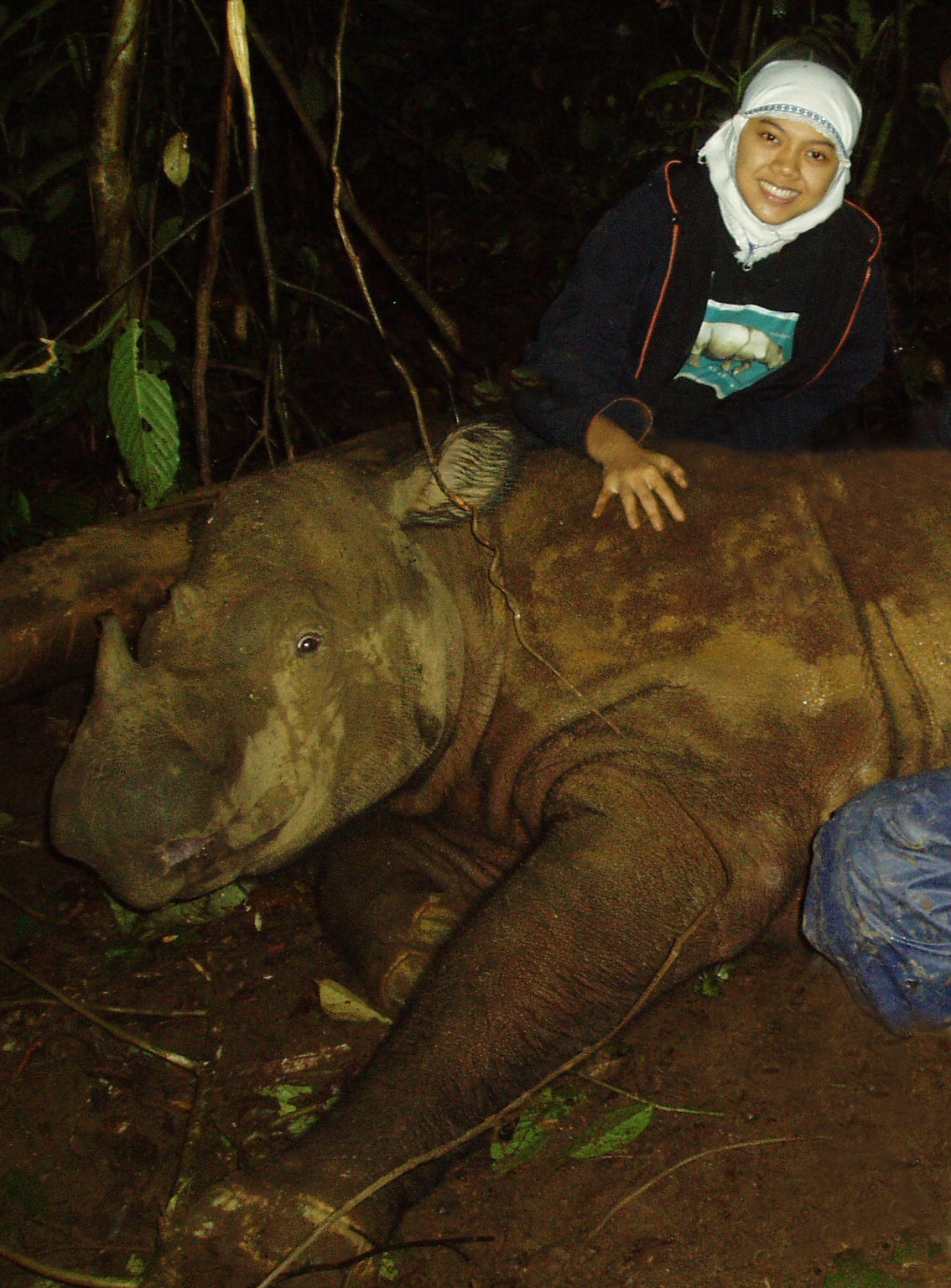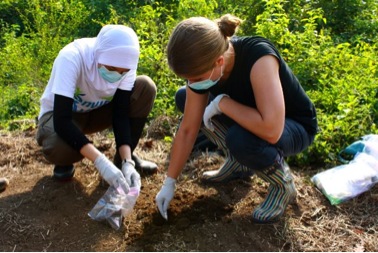Javan Rhino Study


Currently, just 35-50 Javan rhinoceroses survive in a single place, the Ujung Kulon National Park in West Java. A plan adopted by the Indonesian government to help rescue the Javan rhinoceros will create a second habitat that directly borders agricultural areas populated with water buffalo. People and their domestic livestock surround rhinoceroses moved into a new habitat.
The health of the Javan rhinoceros (Rhinoceros sondaicus) is intricately connected with the health of water buffalo (Bubalus bubalis) sharing the rhinoceroses’ habitat and the livelihoods of the people of the area. In particular, three diseases—hemorrhagic septicemia caused by a Pasteurella bacteria, anthrax caused by a Bacillus bacteria and surra caused by a trypanosome blood parasite—represent significant risks to Indonesia’s efforts to expand the range of the Javan rhinoceros. We are working with partners (Morris Animal Foundation and Cornell University) to protect the health of Javan rhinoceroses living in Ujung Kulon National Park (UKNP) through understanding disease dynamics and helping local farmers improve livestock management practices. While accomplishing this goal, we will have the unique opportunity to train an Indonesian veterinarian, government health officers, and transfer knowledge to local farmers of Indonesia to improve the health of buffalo. Healthier buffalo will create a safe environment where Javan rhinos can be protected and relocated with confidence.
Precedents in the Asian rhinoceros conservation community should serve as a warning: a small population of Sumatran rhinoceros in nearby Malaysia died suddenly after contracting trypanosomiasis from water buffalo, ending that nation’s effort to propagate the Sumatran rhinoceros in a sanctuary (Vellayan et. al., 2003; Mohamad et. al., 2004). In addition, three major die-offs of Javan rhinoceros have been reported in recent times; the most significant occurred in 1982 when five rhinos were found dead (AAP-Reuters, 1982). Subsequent investigation implicated hemorrhagic septicemia and anthrax, diseases prevalent in the region’s domestic water buffalo, as likely causes for the outbreak in rhinos. Periodic die-offs persist in UKNP with the loss of at least two more rhinos in 2002-2003, three animals in May of 2010 and a young animal in 2012, all of suspected endemic disease (TNUK, 2012). Although hemorrhagic septicemia and anthrax are widespread in Indonesia, no investigation of these diseases has been conducted in the UKNP ecosystem.
The results of this study will improve the health of the water buffalo that surround and regularly invade the boundaries of UKNP, a UNESCO World Heritage Site that is home to the last population of Javan rhinoceros anywhere in the world. Conservation scientists will be better able to relocate rhinoceros into a secure second habitat with improved knowledge of animal health and, thereby, reduce the risk of disease transmission from livestock to rhinoceros. A talented veterinarian given the unique opportunity to train among a diverse scientific and academic environment will one day lead the effort to train others in Indonesia. One health bridges the rhino and the buffalo—we leading health investigations to build local capacity that will help save the rare Javan rhinoceros, the crown jewel of Indonesia’s amazing biodiversity. The full story can be found in Cornell University's SCOPES magazine.
